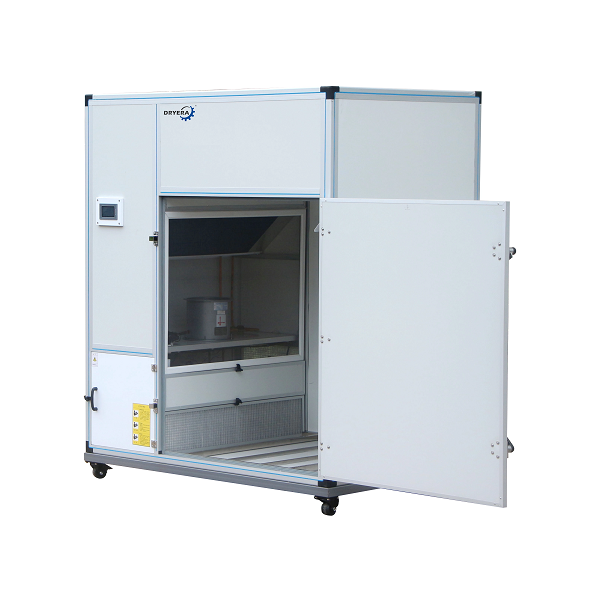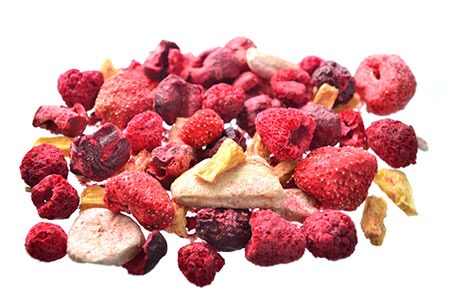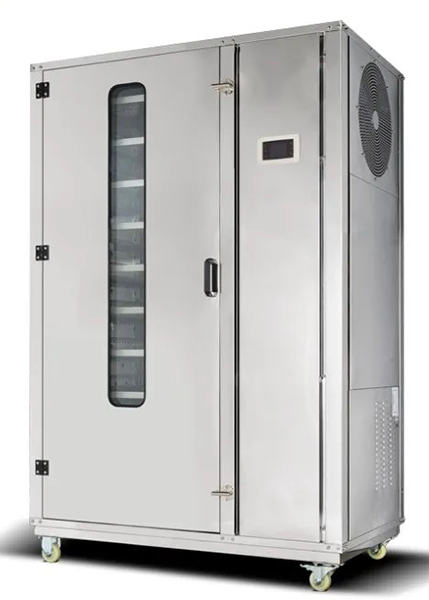
Content Menu
● What is a Heat Pump Dryer?
>> How Does a Heat Pump Dryer Work?
● Advantages of Heat Pump Dryers
>> Enhanced Product Quality
● Special Maintenance Requirements
>> Regular Cleaning
>> Checking Refrigerant Levels
>> Inspecting Electrical Components
● Best Practices for Maintaining Heat Pump Dryers
● Common Issues with Heat Pump Dryers
>> 1. Insufficient Drying
>> 2. Unusual Noises
>> 3. Increased Energy Consumption
● Conclusion
● FAQ
>> 1. What are the main benefits of using a heat pump dryer?
>> 2. How often should I clean my heat pump dryer?
>> 3. Can I perform maintenance on my heat pump dryer myself?
>> 4. What should I do if my heat pump dryer is not drying effectively?
>> 5. Are there specific foods that should not be dried in a heat pump dryer?
Heat pump dryers have gained popularity in the food drying industry due to their energy efficiency and ability to preserve the quality of dried products. As a manufacturer of food drying machines, understanding the maintenance requirements of heat pump dryers is essential for ensuring optimal performance and longevity. This article will explore the workings of heat pump dryers, their advantages, maintenance needs, and best practices for keeping them in top condition.

What is a Heat Pump Dryer?
A heat pump dryer is a type of drying machine that uses a heat pump to circulate air and remove moisture from food products. Unlike traditional dryers that rely on direct heat sources, heat pump dryers utilize a closed-loop system that recycles air. This process not only saves energy but also maintains a consistent temperature, which is crucial for preserving the nutritional value and flavor of dried foods.
How Does a Heat Pump Dryer Work?
1. Air Circulation: The dryer draws in ambient air, which is then heated by the heat pump.
2. Moisture Removal: The warm air passes over the food items, absorbing moisture during the drying process.
3. Condensation: The moisture-laden air is then cooled in a condenser, where water vapor condenses into liquid water.
4. Recycling Air: The cooled, dry air is reheated and recirculated back into the drying chamber, creating an efficient cycle.
This method of drying is particularly beneficial for fruits, vegetables, meats, and herbs, as it helps retain their color, flavor, and nutrients.
Advantages of Heat Pump Dryers
Heat pump dryers offer several advantages over traditional drying methods:
- Energy Efficiency: They consume significantly less energy than conventional dryers due to their recycling process.
- Temperature Control: The ability to maintain lower temperatures prevents damage to delicate food items.
- Environmentally Friendly: Reduced energy consumption translates to a lower carbon footprint.
- Versatility: Suitable for various food types, from fruits to meats.
- Cost-Effective: While the initial investment may be higher, long-term savings on energy bills can be substantial.
Enhanced Product Quality
One of the standout features of heat pump dryers is their ability to preserve the quality of dried products. Traditional drying methods often expose food to high temperatures that can degrade flavor and nutrients. In contrast, heat pump dryers operate at lower temperatures while still effectively removing moisture. This gentle drying process results in:
- Better Flavor Retention: Foods retain their natural flavors more effectively compared to high-temperature drying methods.
- Nutrient Preservation: Vitamins and minerals are less likely to be destroyed during the drying process.
- Improved Texture: The controlled environment helps maintain the texture of foods, preventing them from becoming overly dry or tough.
Special Maintenance Requirements
While heat pump dryers are known for their efficiency and reliability, they do require specific maintenance to ensure optimal performance:
Regular Cleaning
Keeping the dryer clean is crucial for its efficiency. Dust and debris can accumulate on filters and coils, reducing airflow and increasing energy consumption. Regular cleaning should include:
- Filters: Clean or replace filters monthly to ensure proper airflow.
- Condensate Drain: Check and clean the condensate drain regularly to prevent clogs.
- Evaporator Coils: Inspect and clean coils at least twice a year to maintain efficiency.

Checking Refrigerant Levels
The refrigerant is essential for the heat pump's operation. Low levels can lead to poor performance or system failure. Regular checks by a qualified technician can help maintain optimal refrigerant levels.
Inspecting Electrical Components
Heat pump dryers have various electrical components that should be inspected periodically:
- Wiring: Look for signs of wear or damage.
- Connections: Ensure all electrical connections are secure.
- Control Panel: Test the control panel functions regularly to ensure they are operating correctly.
Best Practices for Maintaining Heat Pump Dryers
To maximize the lifespan and efficiency of your heat pump dryer:
- Follow Manufacturer Guidelines: Always adhere to the maintenance schedule provided by the manufacturer.
- Monitor Performance: Keep an eye on drying times and energy consumption; any significant changes may indicate maintenance needs.
- Use Quality Ingredients: Ensure that only high-quality food products are dried to prevent excessive residue buildup inside the machine.
- Train Staff: Ensure that all staff operating the dryer are trained in proper usage and maintenance procedures.
Common Issues with Heat Pump Dryers
Understanding common issues that may arise with heat pump dryers can help you address them promptly:
1. Insufficient Drying
If your heat pump dryer is not drying effectively, it could be due to:
- Clogged filters
- Low refrigerant levels
- Overloading the dryer with too much product
To resolve this issue, check filters for blockages and ensure you're not exceeding recommended load capacities.
2. Unusual Noises
Unusual sounds coming from your dryer may indicate mechanical issues or loose parts. Regular inspections can help identify these problems early on.
3. Increased Energy Consumption
If you notice a spike in energy bills without a corresponding increase in production volume, it may be time to inspect your dryer for maintenance needs or inefficiencies caused by dirty filters or coils.
Conclusion
Heat pump dryers represent a significant advancement in food drying technology. Their energy efficiency, ability to preserve food quality, and versatility make them an excellent choice for food manufacturers. However, like any specialized equipment, they require regular maintenance to operate effectively. By following best practices and adhering to maintenance schedules, you can ensure that your heat pump dryer remains in peak condition for years to come.

FAQ
1. What are the main benefits of using a heat pump dryer?
Heat pump dryers offer energy efficiency, temperature control, environmental benefits, versatility for different food types, and long-term cost savings due to reduced energy consumption.
2. How often should I clean my heat pump dryer?
It is recommended to clean filters monthly, check condensate drains regularly, and inspect evaporator coils at least twice a year for optimal performance.
3. Can I perform maintenance on my heat pump dryer myself?
While some basic cleaning tasks can be done by users, it is advisable to have a qualified technician perform comprehensive checks at least once a year.
4. What should I do if my heat pump dryer is not drying effectively?
If you notice longer drying times or decreased performance, check filters for clogs, inspect refrigerant levels, and consider scheduling professional servicing.
5. Are there specific foods that should not be dried in a heat pump dryer?
Most foods can be dried using a heat pump dryer; however, items with high fat content may require special attention due to potential residue buildup inside the machine.











